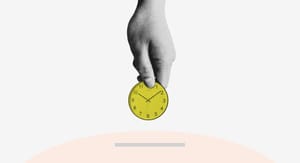If you run a business or do some gigs on the side, this is probably a question that you wish you could ask your client and get a honest response. Your customer will perceive the quality, value, demand, speed and other attributes of your product or service from the amount you charge them. Airlines charges a business traveler that needs to travel on the same day higher than a leisure traveler who booked his ticket 6 months ahead in time. Book publishers provide hardcovers and paperbacks to target different readers. Offering different pricing to different customers allows you to profit from those who are willing to pay more.
Restaurants will often list some high margin items on their menu to take advantage of anchoring. Not only will this convey the quality of the meal but also help make other items on menu look cheaper in comparison.
Freemium is another way to price your product. Web services like Flickr provide a free plan for the majority of users and a premium plan for those who need more features and disk space for their photos. You make money as long as the cost of each user is small enough that your paying customers is able to absorb it.
New companies and freelancers tend to charge less than the competition in order to strike the deal. This is not a long term strategy because if your only advantage over the competition is price, eventually someone will undercut you. You should strive to be the Apple of your industry, not the next Walmart.
If you are interested in knowing more about cost, price, margin and options you have in managing them, you should check out this free ebook, Fixed to Flexible from Todd Sattersen.





Comments